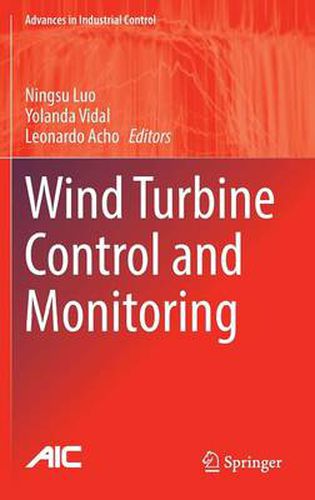Readings Newsletter
Become a Readings Member to make your shopping experience even easier.
Sign in or sign up for free!
You’re not far away from qualifying for FREE standard shipping within Australia
You’ve qualified for FREE standard shipping within Australia
The cart is loading…






This title is printed to order. This book may have been self-published. If so, we cannot guarantee the quality of the content. In the main most books will have gone through the editing process however some may not. We therefore suggest that you be aware of this before ordering this book. If in doubt check either the author or publisher’s details as we are unable to accept any returns unless they are faulty. Please contact us if you have any questions.
Maximizing reader insights into the latest technical developments and trends involving wind turbine control and monitoring, fault diagnosis, and wind power systems, ‘Wind Turbine Control and Monitoring’ presents an accessible and straightforward introduction to wind turbines, but also includes an in-depth analysis incorporating illustrations, tables and examples on how to use wind turbine modeling and simulation software.
Featuring analysis from leading experts and researchers in the field, the book provides new understanding, methodologies and algorithms of control and monitoring, computer tools for modeling and simulation, and advances the current state-of-the-art on wind turbine monitoring and fault diagnosis; power converter systems; and cooperative & fault-tolerant control systems for maximizing the wind power generation and reducing the maintenance cost.
This book is primarily intended for researchers in the field of wind turbines, control, mechatronics and energy; postgraduates in the field of mechanical and electrical engineering; and graduate and senior undergraduate students in engineering wishing to expand their knowledge of wind energy systems. The book will also interest practicing engineers dealing with wind technology who will benefit from the comprehensive coverage of the theoretic control topics, the simplicity of the models and the use of commonly available control algorithms and monitoring techniques.
$9.00 standard shipping within Australia
FREE standard shipping within Australia for orders over $100.00
Express & International shipping calculated at checkout
This title is printed to order. This book may have been self-published. If so, we cannot guarantee the quality of the content. In the main most books will have gone through the editing process however some may not. We therefore suggest that you be aware of this before ordering this book. If in doubt check either the author or publisher’s details as we are unable to accept any returns unless they are faulty. Please contact us if you have any questions.
Maximizing reader insights into the latest technical developments and trends involving wind turbine control and monitoring, fault diagnosis, and wind power systems, ‘Wind Turbine Control and Monitoring’ presents an accessible and straightforward introduction to wind turbines, but also includes an in-depth analysis incorporating illustrations, tables and examples on how to use wind turbine modeling and simulation software.
Featuring analysis from leading experts and researchers in the field, the book provides new understanding, methodologies and algorithms of control and monitoring, computer tools for modeling and simulation, and advances the current state-of-the-art on wind turbine monitoring and fault diagnosis; power converter systems; and cooperative & fault-tolerant control systems for maximizing the wind power generation and reducing the maintenance cost.
This book is primarily intended for researchers in the field of wind turbines, control, mechatronics and energy; postgraduates in the field of mechanical and electrical engineering; and graduate and senior undergraduate students in engineering wishing to expand their knowledge of wind energy systems. The book will also interest practicing engineers dealing with wind technology who will benefit from the comprehensive coverage of the theoretic control topics, the simplicity of the models and the use of commonly available control algorithms and monitoring techniques.